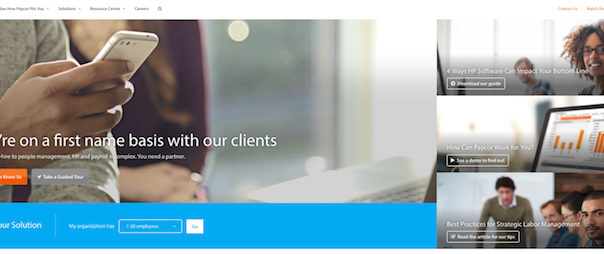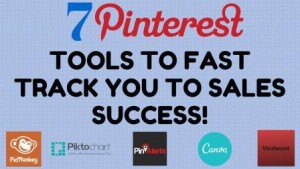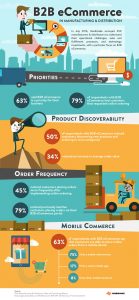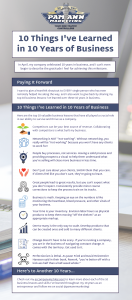— August 25, 2017

geralt / Pixabay
Maybe you’ve heard the term ‘maturity assessment’ floating around in the sales and marketing departments…but you’re not quite sure what exactly it is.
Let’s clear that up.
For the user, a maturity assessment is essentially a resource that helps indicate whether or not a certain solution or strategy is right for you based on the answers provided within the assessment.
For the business, it’s a discovery tool that helps better qualify leads based on responses within the assessment – to see if they’re “ready.
Let’s look at these in a bit more detail, explore the advantages of using them, and examine some real-life examples, too.
The Value of the Maturity Assessment
As we touched on earlier, the maturity assessment is a resource that provides value both to the participant and for the business distributing the assessment.
Prospects that complete an assessment enter their unique input and are able to learn about their needs, pain points, and gaps in service through their own self-discovery process. Overall, this makes the lead education process feel more organic and more personalized, as it’s not a formal sales pitch – and it’s a highly personalized experience, too.
For example: A business owner interested in learning about VoIP options might complete an assessment to find out if they currently have the right phone solution in place, to see if they have enough bandwidth to take on an upgrade, or to see how they stack up against other businesses already using this technology.
For marketers, these assessments are helpful because they allow sales teams to spot super MQLs who are ready to be sent to the sales team as ideal customers.
Maturity assessments can be big contributors for middle-funnel content – a vital lead scoring opportunity that can help the sales department better prioritize leads to follow up with.
For example: Based on the responses to one of these assessments, sales teams can categorize respondents who fit the super MQL criteria and quickly follow up with them to continue the lead nurturing process.
In some instances, this might mean entering these leads into a specific email segment so that automated email campaigns can continue the lead nurturing process via a drip campaign.
Now that we understand the value behind maturity assessments, let’s look at some examples from companies who are leveraging these resources to understand what they look like in action.
Examples of Maturity Assessments
IT Assessment
In the example below from Service Now, we can see how a person completing this assessment is actively learning about their unique IT needs, while also sharing important customer data at the same time.
The beautiful thing about this is that both parties are getting value out of the engaging, interactive experience. There’s no pushy sales pitch being made, and the customer is being honest about their needs and service gaps. Win-win.
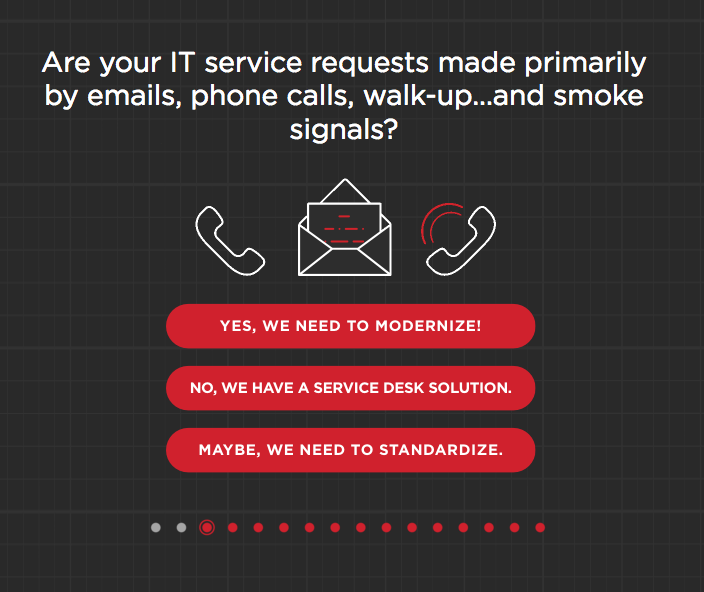
Credit Management Assessment
In this maturity assessment from Euler Hermes, participants are learning whether or not strategic credit management could be helpful for their business. As the user works through the questions, they’re actually scoring themselves as prospective leads – but they’re also learning about their pain points and gathering helpful information along the way. The information is flowing two ways, not just one.
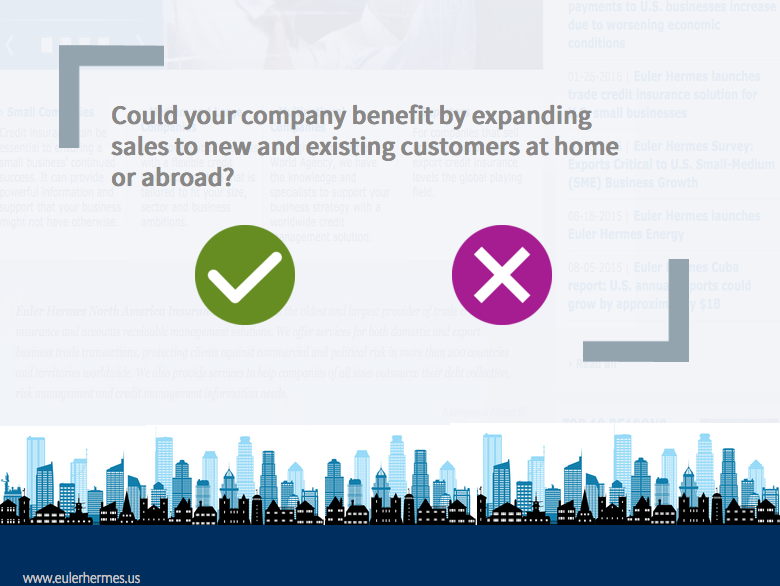
Website Assessment
Hubspot conducts a free website analysis for those who are interested in learning two things: 1) How well their website currently performs, and, 2) Where improvements can be made.
Since Hubspot is a website platform, this is a fantastic way for them to provide valuable information to potential leads in exchange for customer data. From here, they can follow up with personalized marketing messages based on the results of the assessment and nurture leads until they’re ready to convert.
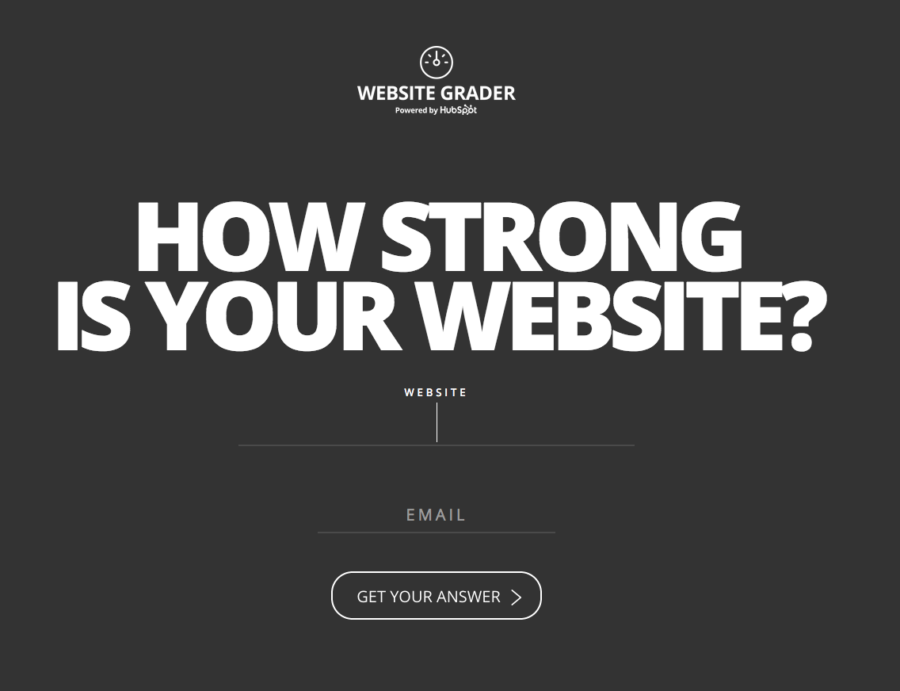
How to Make Your Own Maturity Assessment in 5 Steps
Maybe at this point, you’re thinking, “This all sounds great! I’d love to build my own maturity assessment…but where do I begin?”
Step 1: Identifying Top Sales Qualifying Criteria
There are a few key sales qualifying criteria you’ll want to include in your assessment to help gather the right information you need for the sales and marketing teams.
Often times, the best way to find out what you should include is to conduct your own assessment of sorts:
Talk to your sales team. Ask them about what information is essential to them to properly qualify leads. Find out which questions are asked right at the beginning of demo calls as well as whom the ideal buyer is/ what their situation looks like.
Reach out to current customers. Gather feedback from your current customers and look for patterns in what made them choose your solution. There may be common pain points you solve for them or benefits you offer that many of your ideal clients need to hear about.
Step 2: Create a Value Exchange
The strength of any piece of interactive content, maturity assessments included, is to deliver an immediate and valuable result for participants. That result could be a quiz score, a calculated metric, or, in this case, an evaluation.
Let’s look three at different B2B examples of the value proposition along with the follow through:
HotSchedules, a project management and e-learning solution
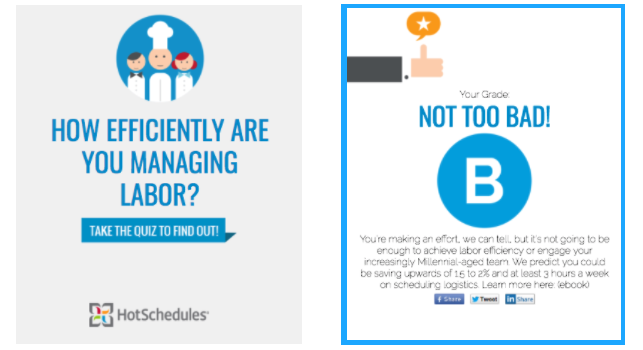
Campaign Creators, a digital marketing agency
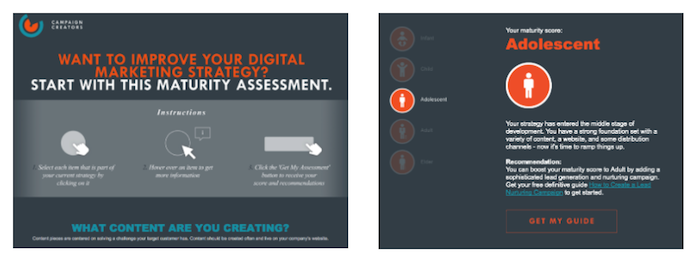
ServiceNow, an IT solutions company
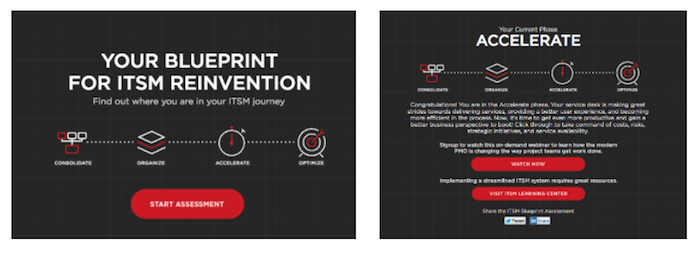
The results page is unique to the participant based on their answers, and shouldn’t be a one-size-fits all. If the result is the same no matter what, repeat users will realize this, and you’ll lose credibility.
Even better is to sync the participant’s result to a specific piece of follow-up content or CTA. If they are an advanced prospect, maybe a demo request. If they fall in in the middle, suggest longer-form content on a subject that would be helpful.
Essential tip: Lead forms should be placed directly before the results page. This allows you to collect answer data before asking for contact information, but also builds momentum for the participant to complete the form and see their result.
Step 3: Make the Design Simple and Brief
Because a maturity assessment is a representation of your product and how it can help your audience, it needs to be on brand. Keeping the color scheme and imagery simple and in service to the experience will help your conversion numbers.
That doesn’t mean there can’t be added graphics or animations to make the experience more engaging, but it needs to be secondary to the questions and answers that are being presented.
The key to maturity assessment copy is keeping it brief and conversational. This includes both number of questions and the word count on questions and answers.
Best practice for assessments is to keep question count between four and eight. Anything more than that will test the participants’ patience and lead to drop off rates.
For copy tone, let’s look at HotSchedules one more time.
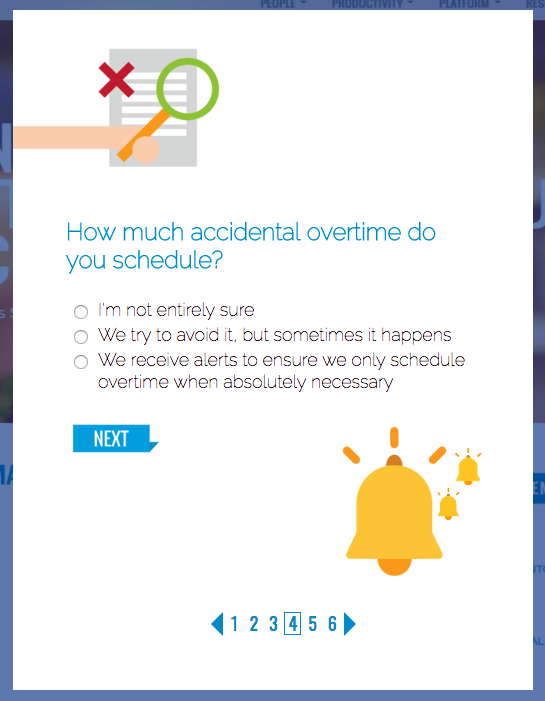
While the question is direct and on the formal side, the answers are colloquial and match what a person might actually answer if they were talking to another human instead of, well, a piece of content. This helps create a more interesting experience for participants and drives them to the results page.
Notice, also, how HotSchedules uses a progress bar at the bottom of the content to indicate how many more questions are coming. This is also a high-converting tactic as participants are not left to wonder if this assessment goes on for another 75 questions or just one more.
Step 4: Marketing Automation/ Lead Scoring Tool
Before launching your maturity assessment, make sure it is hooked into to your marketing automation, CRM, or lead scoring platform.
While this process varies between different interactive content platforms, it is an essential step in content marketing scalability. For some platforms, it’s as simple as filling in a few fields.
Other platforms don’t always have this functionality, which can prove time-consuming or even wasteful if the data is going into a vacuum, or relying on complex and time-consuming data merges.
Here’s an example of how that might look with SnapApp’s marketing edition of Which Game of Thrones House Are You?
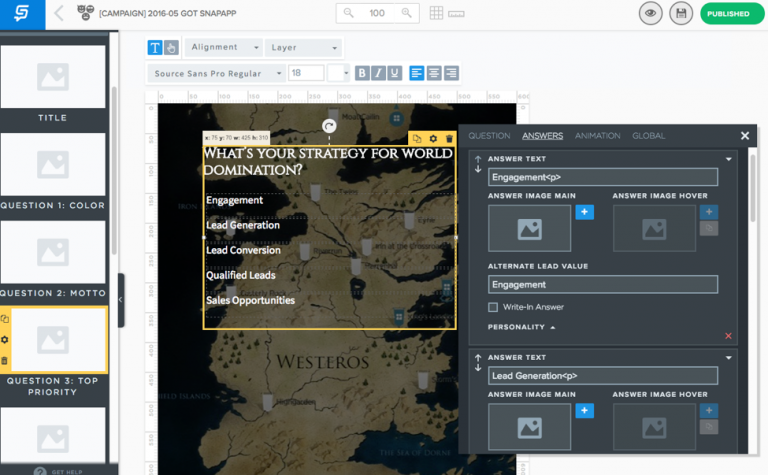
While not a full-on maturity assessment, we do include some qualifying questions in a more fun and seasonal experience.
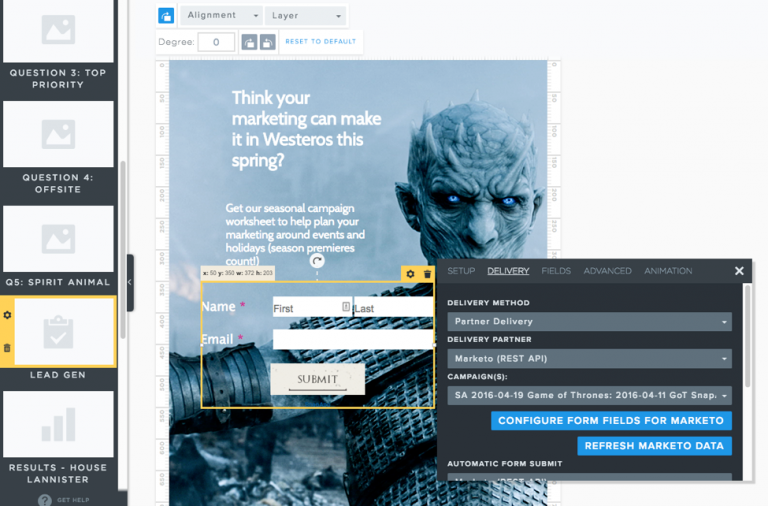
Which syncs with our marketing automation platform for lead scoring and follow-up content.
Step 5: Promotion and Display
The last step: promote!
Just because this is a more middle-funnel content asset as opposed to top-funnel, doesn’t mean it shouldn’t see the light of day. Promoting assessments is actually easier than traditional blogs or static content because they invite user-participation.
On social, you can challenge your audience to benchmark themselves. Here’s example from ServiceNow:
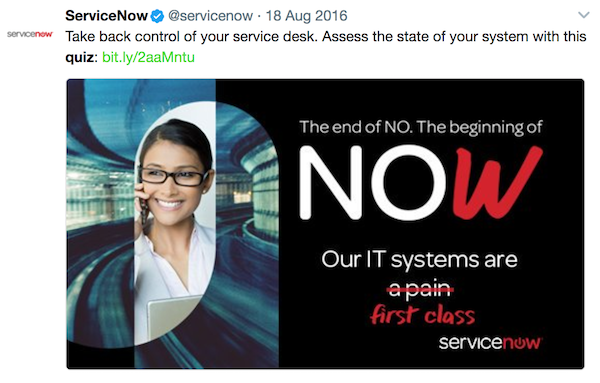
On your website, you can help present the assessment early, right on the homepage, to identify hot leads.
Check out how Paycor uses a qualifying assessment on their website:
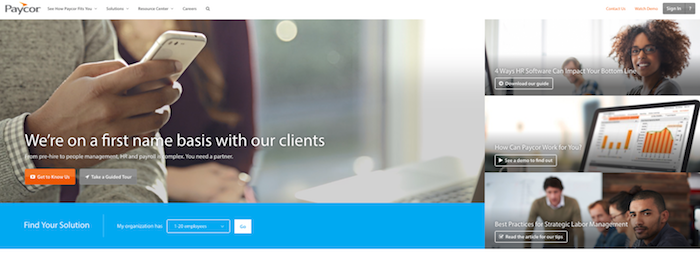
In the blue bar, they ask visitors a question immediately that both helps them identify the best solution, but also pulls in data about their company size.
Using maturity assessment on landing pages instead of a lead form can accomplish the goal of lead capturing, but also boost the data you receive. At the end of the experience, users get the ebook, or webinar, that the landing page was serving.
Leverage the Maturity Assessment
We know that lead scoring is already being used by 86% of marketers, but the question is: How can those efforts be fine-tuned for better, more efficient results? It seems that content like interactive assessments is certainly part of the answer to that question, thanks to their ability to gather customer data in a passive, engaging format.
Now is the time to start thinking about how you can build your own assessment to bolster your sales in the year ahead. By gathering the right customer data up front, you can vastly improve the efficiency and effectiveness of this department and generate impressive ROI (which are both always good things.)
Business & Finance Articles on Business 2 Community
(219)
Report Post